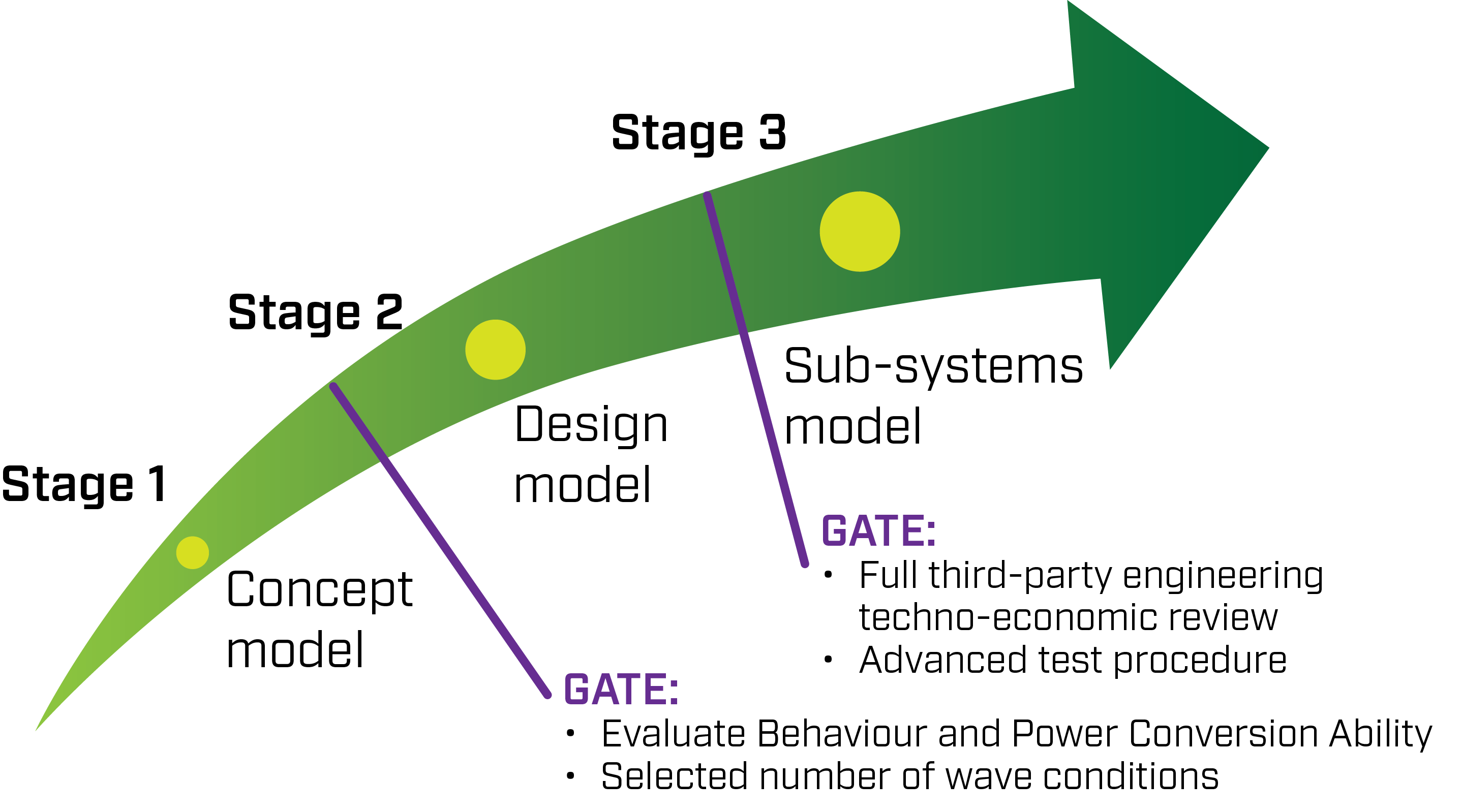To ensure the successful development and deployment of WECs, it is essential to keep track of several key metrics that provide valuable insights into their performance and efficiency. Developers and operators can then use the metrics to make informed decisions in terms of improving their design, operation, and maintenance.
What are metrics?
Metrics are numerical measures that are used to assess and evaluate various aspects of a system, process, or phenomenon. They provide a quantitative way of evaluating the performance, effectiveness, and efficiency of a given system. Metrics can be used to track progress, identify areas of improvement, and make informed decisions. They can be applied in various fields, including finance, marketing, manufacturing, and technology. Some common metrics include performance indicators, operational metrics, customer satisfaction metrics, and financial metrics.
The metrics, being measurements, are used to form a coherent picture of an area to be evaluated, as they are typically not evaluations themselves. A parallel can be drawn with the evaluation of a house under a “spacious” criterion; the area is only one metric amongst others that influence the perception of a property being spacious, such as the number of rooms and lighting conditions.
What can metrics for WECs be used to evaluate?
Although the development of a WEC solution should embrace a comprehensive set of evaluation areas and follow a strict stage development approach, IMPACT has focused on three evaluation areas in its work package dedicated to New Testing Methodologies & Metrics:
- Performance, which covers aspects such as wave power capture and conversion,
- Reliability, which assesses the lifetime-dependent and probabilistic-based ability of the WEC, its systems or their components, to perform under operational conditions, and
- Survivability, which covers aspects related to survivability of the items of a WEC in non-operational conditions, typically extreme events.
It is under these three areas that methodologies and metrics have been reviewed, proposed, or formulated, specifically targeting the conceptualisation, design, and construction of test rigs suitable for hybrid testing of key WEC sub-systems later in the project.
The challenge of formulating a metric in wave energy conversion
Ideally, metrics should exhibit a myriad of attributes, such as being objective, quantitative, transparent, simple, easy to use, equitable, etc. No metric is perfect though, and the process of formulating a metric to become established and globally recognised in the wave energy field is particularly challenging. The development of wave energy has seen a great variability of promising designs, which, together with the limited operation and testing of prototypes and a lack of deep knowledge sharing by developers, makes it difficult to conclude on the effectiveness of some of the wave energy metrics currently in use and the formulation of new ones.
Notwithstanding the above difficulties, a considerable effort has been employed to establish WEC specific performance metrics, notably by the International Electrotechnical Commission (IEC), Ocean Energy Systems (OES) and the European Marine Energy Centre (EMEC), among others, in the form of technical specifications and guidelines. In addition, several publications and research projects have analysed and proposed metrics to be applied throughout the years. However, compared to established industries, dedicated metrics for WEC development are still very limited.
Where are the metrics (and actual guidance to the development of WECs)?
The best and most immediately accessible reference sources of WEC-related evaluation metrics for WEC developers, researchers, investors and funding bodies, are standards, guidelines, and recommended practices specific to Wave Energy Conversion. Arguably, the most up-to-date and relevant ones as of today are:
- Ocean Energy System’s (OES) “An International Evaluation and Guidance Framework for Ocean Technology”, and
- The International Electrotechnical Commission’s (IEC) TS 62600 set of technical specifications for Marine Energy.
It is also worth mentioning the seminal works by the European Marine Energy Centre’s (EMEC) and its library of draft standards and guidelines, as well as Equimar’s (Equitable Testing and Evaluation of Marine Energy Extraction Devices in terms of Performance, Cost and Environmental Impact) project protocols.
Staged development
Both the OES framework and IEC’s technical specifications adhere to a strict stage gated approach of technology development. The keystone of the approach is that a set of activities is to be performed covering several evaluation areas at each stage and that it is only possible to move to the next stage after successfully completing all the activities. The evaluation of the results of each of the activities therefore acts as an effective stage gate, where developers and other stakeholders can evaluate their investment and decide on continuing their efforts.

Application of this approach effectively reduces wave energy development risks. In the past, some prototypes failed dramatically at sea due to, for example, a component failure, as it had not been subject to proper reliability and survivability assessment. This approach also aims to eliminate such incidents, which can “kill” an otherwise very robust concept. Furthermore, it prevents unbalanced research efforts at low TRLs across different disciplines, as the process demands a multi-disciplinary approach.
Other evaluation areas: a note about environmental impact
The Performance, Reliability, and Survivability evaluation areas were specifically targeted by the IMPACT project in relation to testing WEC systems and their components (in dry-test-rigs). Other areas include maintainability, ease of installation, manufacturability, and affordability (otherwise known as techno-economic evaluation, for which IMPACT has carried out the review work and application of metrics) as listed in OES’ framework. Another substantial contribution from the project has been the review of the aspects related to environmental impact. There is a notable lack of standards and clear guidelines to help the developer in this aspect, and, naturally, of clear related metrics. Specific challenges to WEC development and implementation in terms of environmental impact, as well as proposed solutions to move forward, have been addressed in IMPACT and summarised in a previous publication.
IMPACT’s contribution to the development and application of metrics in Wave Energy
Existing metrics in guidelines, standards, technical specifications, and scientific publications, either specific to wave energy or applicable to the sector, have been thoroughly reviewed and compiled within IMPACT. Furthermore, a set of new metrics have been formulated within the project, particularly focusing on their ability to be assessed in pre-prototype tests. Both outputs are aimed to be published in open access scientific journals/conferences in 2023.
It is envisioned that the metrics will be applied to the tests to be conducted with the IMPACT’s test rigs, where dual hybrid testing of key WEC sub-systems will be carried out in Work Package 7: Integration of Novel Test Rigs & Methodologies.
About José Miguel Rodrigues
José Miguel Rodrigues is a senior scientist at SINTEF Ocean, a partner in the IMPACT project, and is leading Work Package 5: New Testing Methodologies & Metrics.









Comments
No comments yet. Be the first to comment!